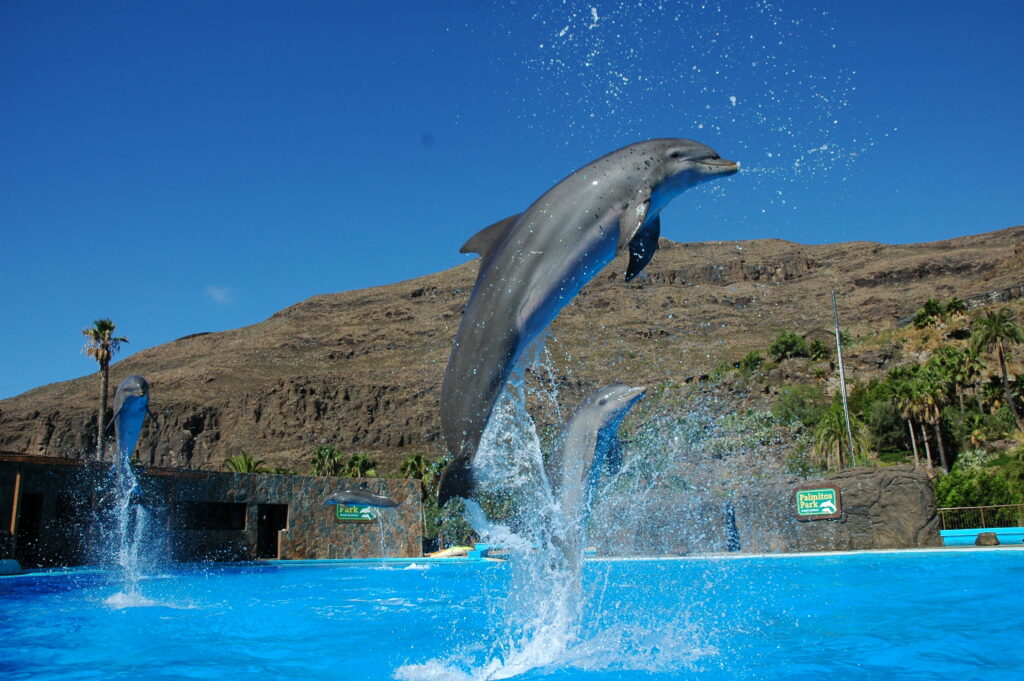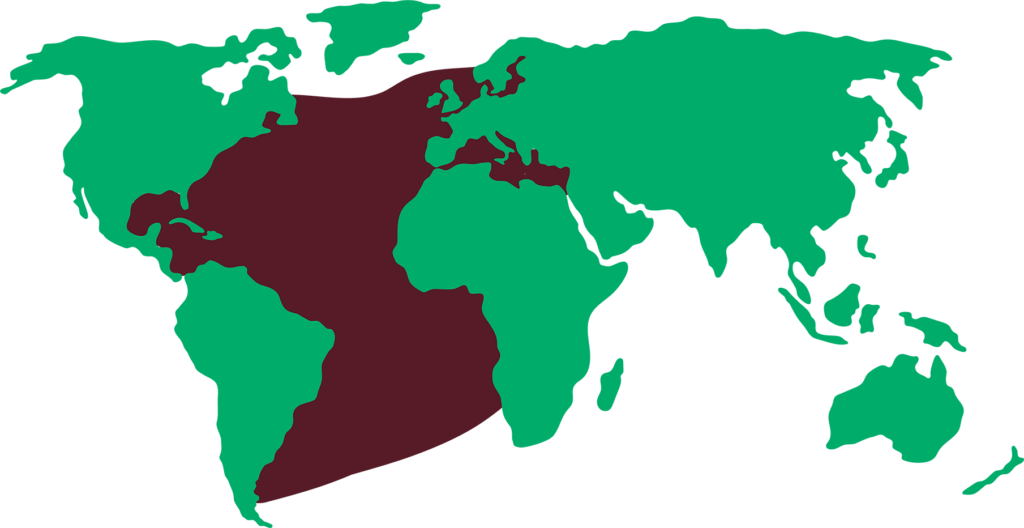COMMON BOTTLENOSE DOLPHIN
Tursiops truncatus

LENGTH

4 m
WEIGHT

600 kg
LIFESPAN

57 years
The common bottlenose dolphin is a cetacean belonging to the family Delphinidae. This is the most common and best known species among all the species of dolphins.
General characteristics
Bottlenose dolphins are dark grey on the back and light grey on the belly. They may have dark spots and pinkish colouring on the belly. The snout is short and well-defined that resembles the shape of a bottle, hence their name.
They weigh between 150-600 kg and have a length of about 4 metres, with males being larger than females. Their average speed is usually 1.7 metres per second, but in very short swims, they can reach up to 8 metres per second.
Feeding
They mainly consume fish but also eat small amounts of cephalopods and crustaceans.
Behaviour
Bottlenose dolphins are very social and playful. They can be often seen jumping and doing acrobatics in the water. They form groups of between 2 and 15 individuals. These groups are segregated according to the sex, age and reproductive condition of the animals that integrate them, and there is a great flow of movement of individuals between the different groups.
Dolphins have a highly developed sense of echolocation. They emit amplified sound waves which, if hit an obstacle, bounce back to the ear through their lower jaw. This way, dolphins are able to detect what is around them, as well as to detect food and predators.
They use sounds and body movements to communicate with each other.
When dolphins sleep, only half of the brain enters a sleep state while the other half remains conscious. This allows the dolphin to come up to the surface to breathe even though they are sleeping.
Reproduction
During the breeding season, males can be quite aggressive in their behaviour and compete with others for females.
Although births can occur throughout the year, most births occur during spring. After a gestation period of 12 months, females give birth to a single calf. The lactation period is long, between 6 and 18 months, and the mother invests a lot of time and energy in taking care of the baby.
Threats
Like all marine animals, any activity or event that may harm their natural habitat is considered a threat, such as water pollution or climate change. In addition, all human activities (shipping routes, tourism, hunting and bycatch) disrupt the well-being of these animals.
Distribution
They can be found in the waters of the Atlantic Ocean, Mediterranean Sea and Caribbean.

Did you know?
They shed their skin 12 times a day to create a smooth surface that improves swimming efficiency.
Bottlenose dolphins have between 72-104 teeth. They do not grow back once they are lost.
They have little or no sense of smell.
Conservation status
